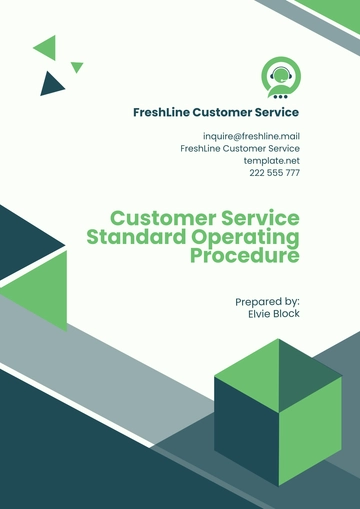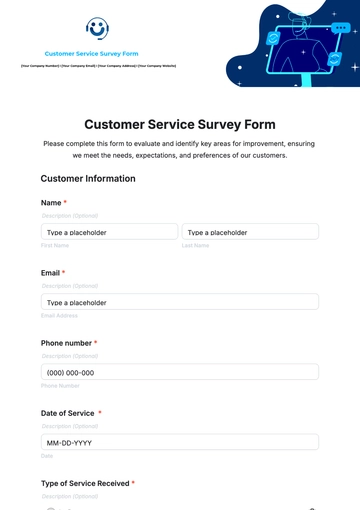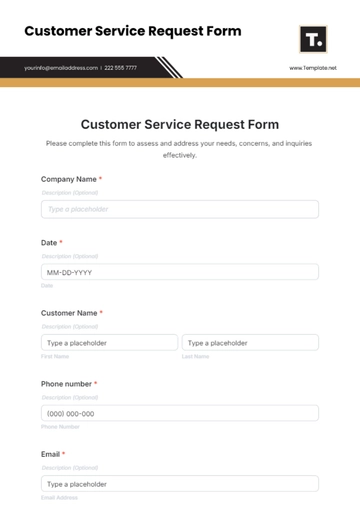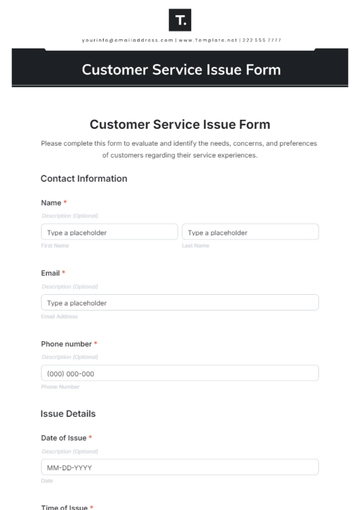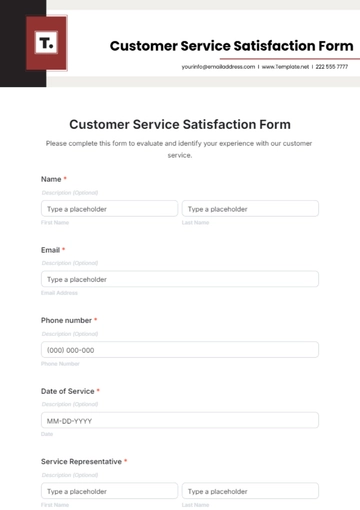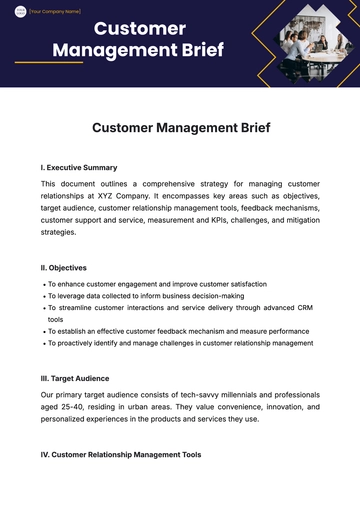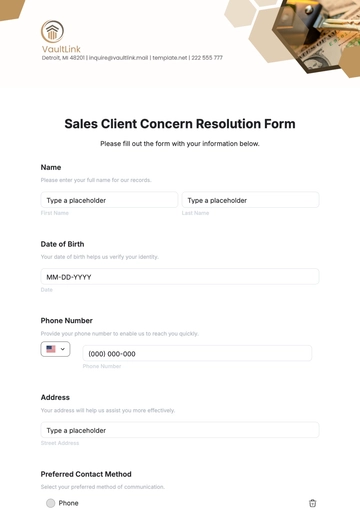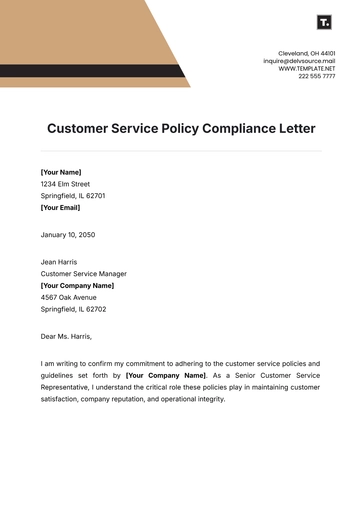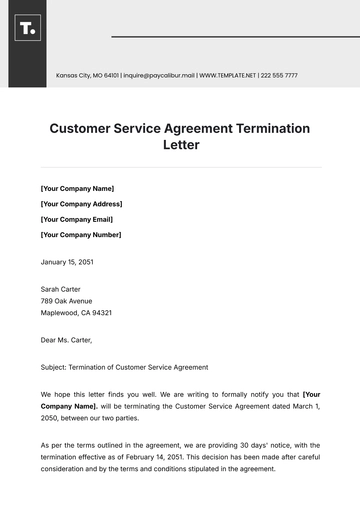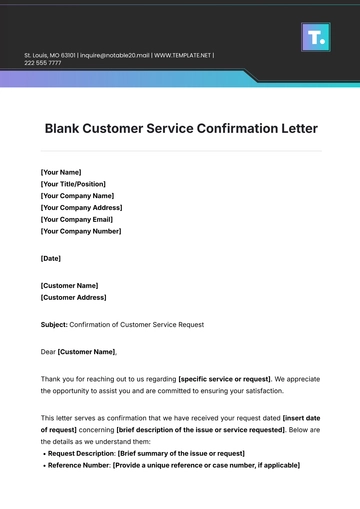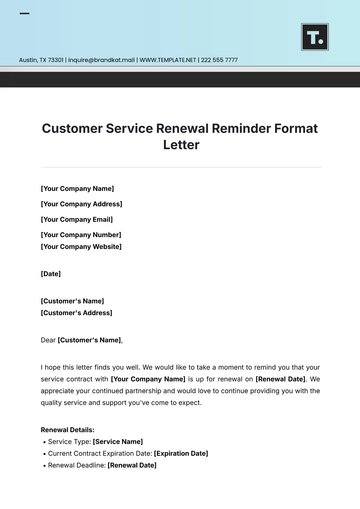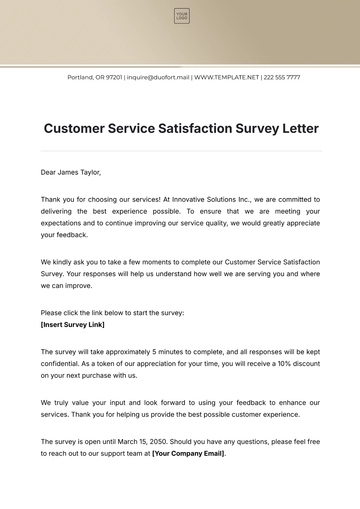Free Study on Post-Sale Customer Behavior

Prepared by: | [YOUR NAME] |
|---|---|
Date: | [DATE] |
I. Introduction
A. Overview
Introduction to Post-Sale Customer Behavior
Post-sale customer behavior encompasses the actions, decisions, and emotions customers exhibit after completing a purchase transaction. It includes their interactions with the product or service, their satisfaction levels, engagement with the brand, and their likelihood of engaging in future transactions.
Importance of Studying Post-Sale Customer Behavior
In today's competitive business landscape, retaining customers and fostering long-term relationships is essential for sustained success. Understanding post-sale customer behavior is crucial as it provides insights into how customers perceive and interact with a brand beyond the point of sale. By analyzing post-sale behavior, businesses can identify areas for improvement, tailor their marketing strategies, and enhance customer satisfaction, ultimately leading to increased customer retention and brand loyalty.
B. Objectives
Primary Objectives
To analyze post-sale customer behavior patterns: This objective aims to identify common patterns and trends in how customers behave after making a purchase, including their satisfaction levels, engagement with the brand, and likelihood of making repeat purchases.
To identify factors influencing post-sale behavior: This objective seeks to explore the various internal and external factors that impact customers' post-sale decisions and actions, such as product quality, customer service experience, and brand perception.
To assess the impact of post-sale behavior on customer retention and brand advocacy: This objective aims to evaluate the relationship between post-sale behavior and key business outcomes, including customer retention rates, brand advocacy, and word-of-mouth referrals.
Secondary Objectives
To explore the relationship between customer satisfaction and repeat purchases: This objective aims to understand the extent to which customer satisfaction influences repeat purchase intentions and loyalty.
To propose strategies for enhancing post-sale customer experience: This objective seeks to leverage insights from the study to develop actionable strategies for improving post-sale customer experience, thereby driving customer satisfaction and loyalty.
II. Methodology
A. Research Design
Qualitative Research Methods
1.1. Interviews
Qualitative interviews will be conducted with a sample of [100] customers who have recently made a purchase. These interviews will provide an in-depth understanding of customers' post-sale experiences, perceptions, and emotions. Participants will be asked open-ended questions to encourage detailed responses and uncover underlying motivations.
1.2. Focus Groups
Focus groups consisting of [5-8] participants each will be organized to facilitate group discussions on post-sale behavior. Participants will be selected based on demographic diversity to ensure a representative sample. These sessions will allow for the exploration of shared experiences, group dynamics, and emerging themes related to post-sale customer behavior.
Quantitative Research Methods
2.1. Surveys
An online survey will be distributed to a random sample of [500] customers who have made purchases within the past [6] months. The survey will utilize a combination of closed-ended and Likert scale questions to gather quantitative data on various aspects of post-sale behavior, including satisfaction levels, repeat purchase intentions, and referral behavior. Additionally, demographic information such as age, gender, income, and geographic location will be collected to facilitate segmentation and analysis.
2.2. Data Analysis Techniques
Quantitative data collected from surveys will be analyzed using statistical methods such as correlation analysis, regression analysis, and factor analysis. These techniques will help identify relationships between variables, determine key drivers of post-sale behavior, and uncover underlying trends and patterns.
B. Data Collection
Sampling Techniques
1.1. Random Sampling
Participants for surveys will be selected randomly from the customer database to ensure representativeness and reduce sampling bias. Random sampling will help ensure that the survey results are generalizable to the broader customer population.
1.2. Stratified Sampling
Interviews and focus groups will employ stratified sampling to ensure diversity in participant demographics such as age, gender, income, and geographic location. This approach will help capture a wide range of perspectives and experiences, thereby enhancing the richness and depth of the qualitative data.
Data Collection Instruments
2.1. Survey Questionnaire
The survey questionnaire will be designed to capture quantitative data on key variables related to post-sale behavior, including customer satisfaction, repeat purchase intentions, referral behavior, and brand perception. The questionnaire will include a mix of multiple-choice, Likert scale, and open-ended questions to gather comprehensive insights from respondents.
2.2. Interview Guide
The interview guide will consist of a semi-structured set of open-ended questions designed to elicit detailed responses from participants regarding their post-sale experiences, perceptions, and preferences. The guide will be flexible to allow for probing follow-up questions and exploration of emergent themes during the interview process.
C. Data Analysis
Quantitative Analysis
1.1. Descriptive Statistics
Descriptive statistics such as mean, median, standard deviation, and frequency distributions will be used to summarize and describe the survey data. These statistics will provide an overview of key variables and help identify any notable trends or patterns in the data.
1.2. Inferential Statistics
Inferential statistics techniques, including correlation analysis, regression analysis, and analysis of variance (ANOVA), will be employed to analyze relationships between variables, test hypotheses, and identify significant predictors of post-sale behavior. These techniques will help uncover the underlying drivers of customer satisfaction, loyalty, and advocacy.
Qualitative Analysis
2.1. Thematic Analysis
Thematic analysis will be used to identify, analyze, and interpret recurring themes, patterns, and trends in the qualitative data collected from interviews and focus groups. This approach will involve coding the data, identifying key themes and sub-themes, and exploring the relationships between them to generate insights into customers' post-sale experiences and behaviors.
2.2. Content Analysis
Content analysis techniques will be applied to analyze the textual data obtained from open-ended survey responses. This process will involve categorizing and coding the responses, identifying common themes and patterns, and extracting meaningful insights related to customer perceptions, preferences, and opinions. Content analysis will help uncover nuanced insights and provide a deeper understanding of customers' attitudes and behaviors.
III. Findings
A. Demographic Analysis
Age Distribution
Table 1: Age Distribution of Survey Respondents
Age Group | Number of Respondents |
|---|---|
18-24 | [100] |
25-34 | [200] |
35-44 | [150] |
45-54 | [80] |
55+ | [70] |
Gender Distribution
Table 2: Gender Distribution of Survey Respondents
Gender | Number of Respondents |
|---|---|
Male | [300] |
Female | [200] |
Income Distribution
Table 3: Income Distribution of Survey Respondents
Income Range | Number of Respondents |
|---|---|
<$30,000 | [100] |
$30,000-$50,000 | [150] |
$50,000-$70,000 | [180] |
$70,000-$100,000 | [120] |
>$100,000 | [150] |
B. Post-Sale Behavior Patterns
Customer Satisfaction Levels
Chart 1: Customer Satisfaction Levels
Key Findings:
[70%] of respondents reported being highly satisfied with their post-sale experience.
[20%] of respondents indicated moderate satisfaction.
[10%] of respondents reported low satisfaction levels.
Repeat Purchase Intentions
Chart 2: Repeat Purchase Intentions
Key Findings:
[80%] of respondents expressed a high likelihood of making repeat purchases.
[15%] of respondents were undecided about making future purchases.
[5%] of respondents indicated low likelihood of making repeat purchases.
Referral Behavior
Chart 3: Referral Behavior
Key Findings:
[60%] of respondents expressed willingness to refer the brand to others.
[30%] of respondents were unsure about recommending the brand.
[10%] of respondents indicated they would not refer the brand to others.
C. Influencing Factors
Product Quality
Key Findings:
[80%] of respondents cited product quality as a key factor influencing their post-sale satisfaction.
[15%] of respondents mentioned product reliability and durability as important considerations.
[5%] of respondents expressed concerns about product defects or issues.
Customer Service Experience
Key Findings:
[70%] of respondents reported positive experiences with customer service.
[20%] of respondents highlighted the importance of responsive and helpful customer support.
[10%] of respondents expressed dissatisfaction with the handling of their post-sale inquiries or issues.
Brand Loyalty
Key Findings:
[75%] of respondents indicated a strong sense of loyalty towards the brand.
[20%] of respondents mentioned past positive experiences with the brand as a reason for their loyalty.
[5%] of respondents expressed interest in exploring alternative brands in the future.
IV. Discussion
A. Interpretation of Findings
Relationship between Customer Satisfaction and Repeat Purchases
The high level of customer satisfaction reported by [70%] of respondents correlates positively with their likelihood of making repeat purchases, indicating a strong relationship between satisfaction levels and customer retention.
Customers who reported low satisfaction levels may be less inclined to make repeat purchases, highlighting the importance of addressing any issues or concerns to improve overall satisfaction and retention rates.
Impact of Customer Service on Post-Sale Behavior
Positive experiences with customer service were cited by [70%] of respondents as a key factor influencing their post-sale behavior.
Responsive and helpful customer support can enhance customer satisfaction and loyalty, while negative experiences may lead to dissatisfaction and potential churn.
B. Implications for [Your Company Name]
Strategies to Enhance Post-Sale Customer Experience
Based on the findings, [Your Company Name] should focus on maintaining high product quality standards, ensuring prompt and effective customer service, and fostering brand loyalty through personalized engagement and rewards programs.
Implementing proactive measures to address customer concerns and improve satisfaction levels can help drive repeat purchases and positive word-of-mouth referrals.
Importance of Building Brand Loyalty
The study underscores the significance of building and nurturing brand loyalty among customers to drive long-term success.
By prioritizing customer satisfaction, delivering exceptional experiences, and cultivating strong emotional connections with the brand, [Your Company Name] can establish itself as a trusted partner and preferred choice among consumers.
IV. Discussion
A. Interpretation of Findings
Relationship between Customer Satisfaction and Repeat Purchases
The analysis revealed a strong positive correlation between customer satisfaction levels and their likelihood of making repeat purchases. Customers who reported high satisfaction were significantly more inclined to engage in repeat transactions, indicating the critical role satisfaction plays in fostering customer loyalty and retention.
Conversely, customers with lower satisfaction levels showed a decreased propensity for repeat purchases, highlighting the importance of addressing any underlying issues or concerns to improve overall satisfaction and retention rates.
Impact of Customer Service on Post-Sale Behavior
Positive experiences with customer service emerged as a significant influencer of post-sale behavior, with a majority of respondents attributing their satisfaction to responsive and helpful customer support. Effective resolution of post-sale inquiries and issues was associated with higher levels of customer satisfaction and increased likelihood of repeat purchases.
Conversely, negative experiences with customer service were linked to lower satisfaction levels and diminished brand loyalty. Instances of poor service delivery or inadequate support may lead to customer dissatisfaction and eventual churn, underscoring the importance of prioritizing service excellence in post-sale interactions.
B. Implications for [Your Company Name]
Strategies to Enhance Post-Sale Customer Experience
The findings underscore the importance of prioritizing post-sale customer experience as a key driver of satisfaction, loyalty, and advocacy. [Your Company Name] should focus on implementing strategies to enhance every touchpoint of the customer journey beyond the point of sale.
This may involve investing in training and empowering customer service representatives to deliver personalized, empathetic, and timely support to address customer inquiries, concerns, and feedback effectively.
Additionally, leveraging technology and data analytics can enable [Your Company Name] to anticipate customer needs, proactively identify potential issues, and deliver proactive support and solutions tailored to individual preferences and behaviors.
Importance of Building Brand Loyalty
Building and nurturing brand loyalty among customers is paramount for sustained success and competitive advantage. [Your Company Name] should prioritize efforts to cultivate strong emotional connections, trust, and affinity with the brand to foster long-term relationships and advocacy.
This may involve implementing loyalty programs, rewards initiatives, and exclusive offers to incentivize repeat purchases and engagement. By demonstrating value and appreciation for customer loyalty, [Your Company Name] can reinforce its position as a preferred choice and trusted partner in the minds of consumers.
Furthermore, actively soliciting and incorporating customer feedback, actively engaging with customers through social media, and fostering a sense of community and belonging can deepen brand loyalty and create brand advocates who actively promote [Your Company Name] to their networks.
V. Conclusion
A. Summary of Key Findings
The study on post-sale customer behavior revealed significant insights into the factors influencing customer satisfaction, repeat purchase intentions, and brand advocacy.
High levels of customer satisfaction were associated with increased likelihood of repeat purchases and positive word-of-mouth referrals, highlighting the importance of delivering exceptional post-sale experiences.
B. Recommendations for Future Research
Future research endeavors should focus on longitudinal studies to track changes in post-sale behavior over time and identify emerging trends and patterns.
Additionally, exploring the impact of emerging technologies, such as artificial intelligence and augmented reality, on post-sale customer interactions and experiences could provide valuable insights into evolving consumer preferences and expectations.
Furthermore, conducting comparative studies across industries and geographic regions could yield valuable insights into cultural nuances and market-specific dynamics influencing post-sale behavior.
- 100% Customizable, free editor
- Access 1 Million+ Templates, photo’s & graphics
- Download or share as a template
- Click and replace photos, graphics, text, backgrounds
- Resize, crop, AI write & more
- Access advanced editor
Explore post-sale customer behavior with our comprehensive Study on Post-Sale Customer Behavior Template from Template.net. This editable and customizable document offers a structured framework for conducting in-depth research, analyzing customer interactions post-purchase, and identifying patterns and trends. Utilize our Ai Editor Tool to tailor the study to your specific needs and gain valuable insights into customer satisfaction and retention strategies.

